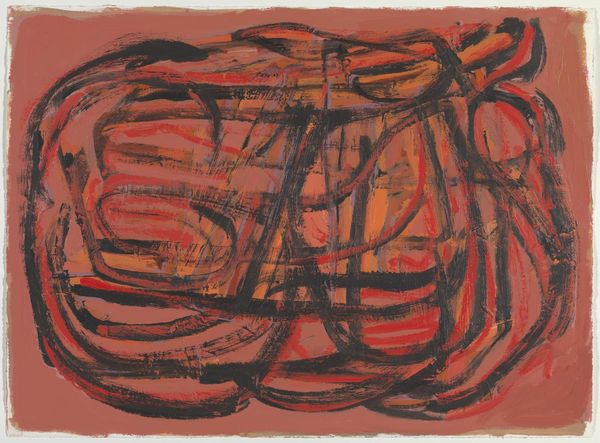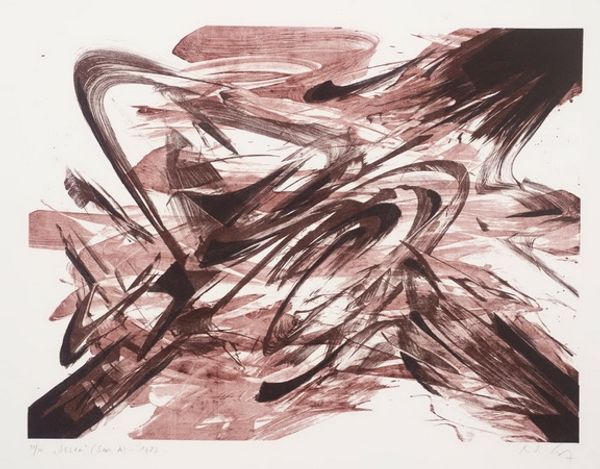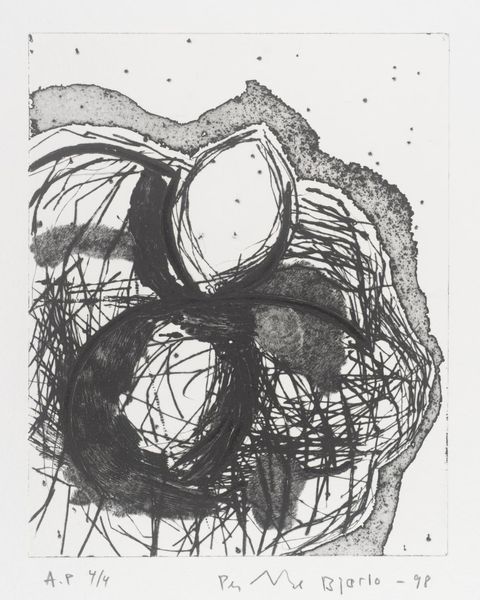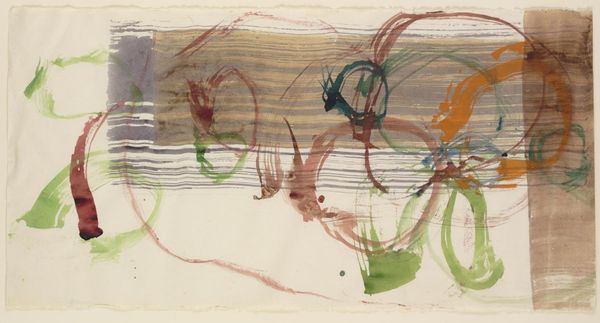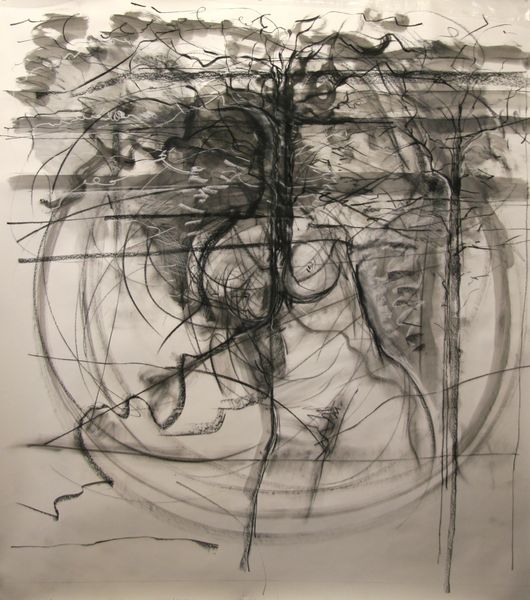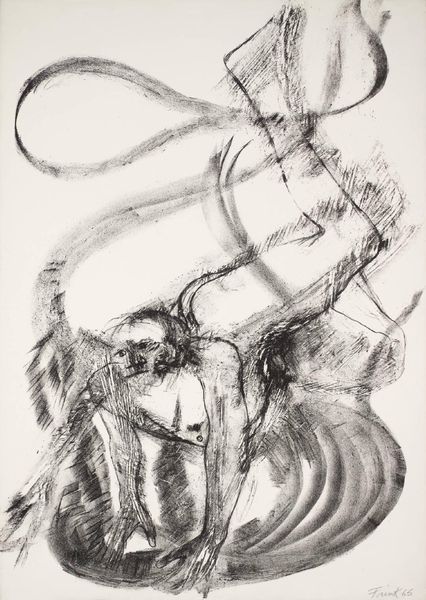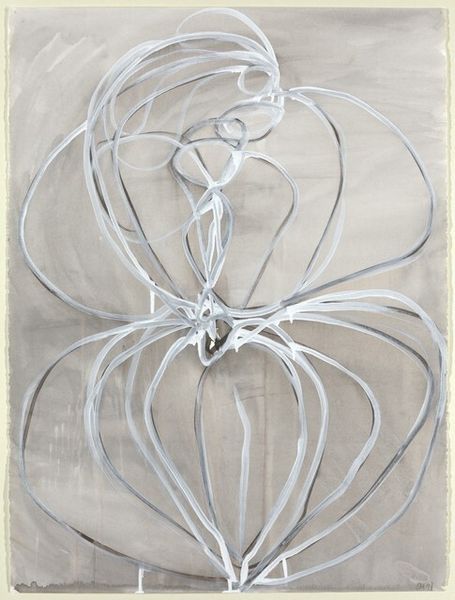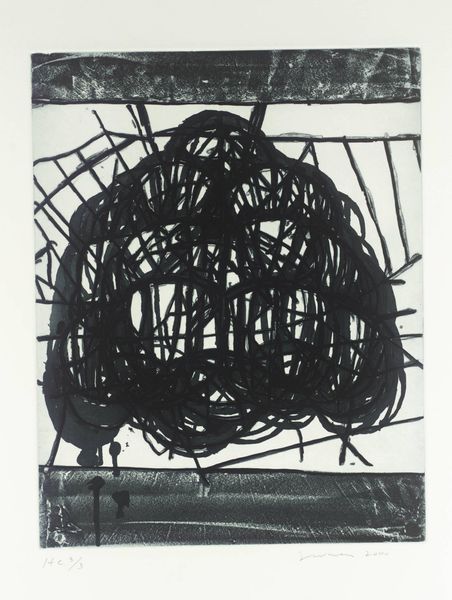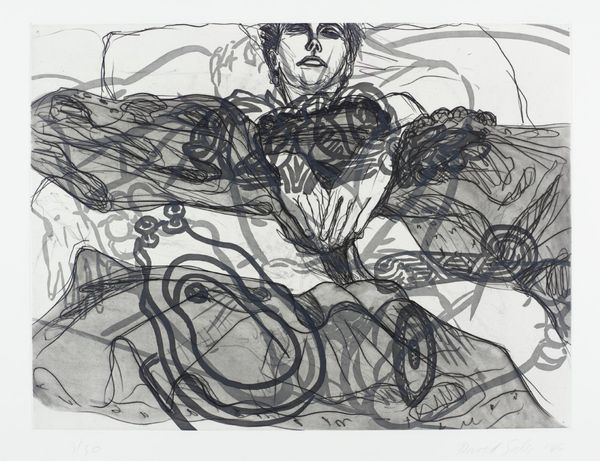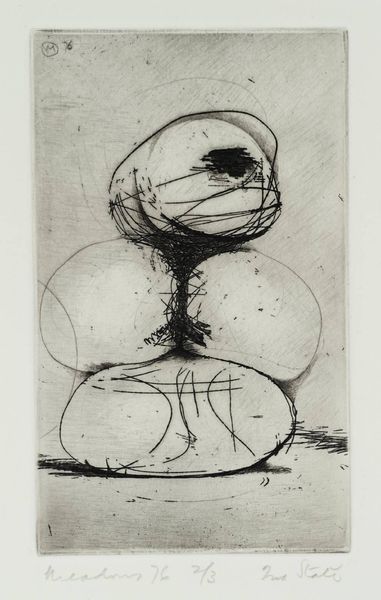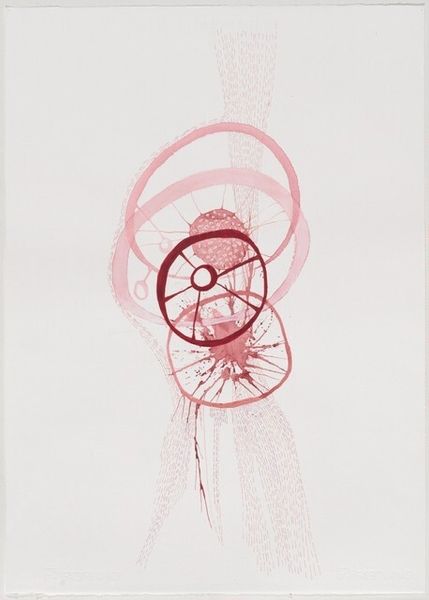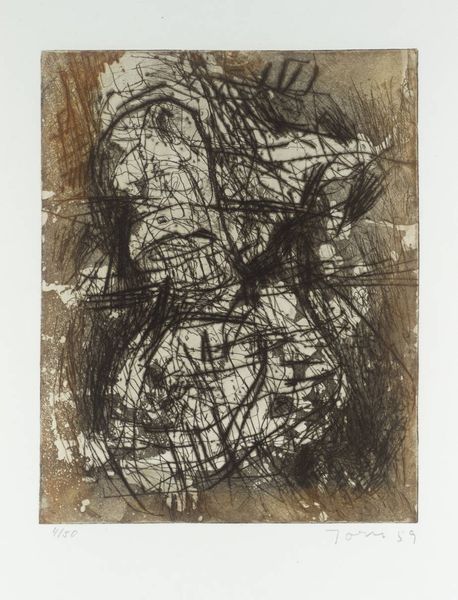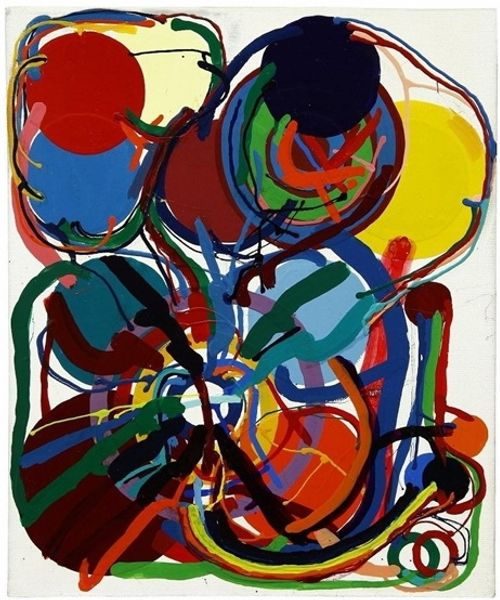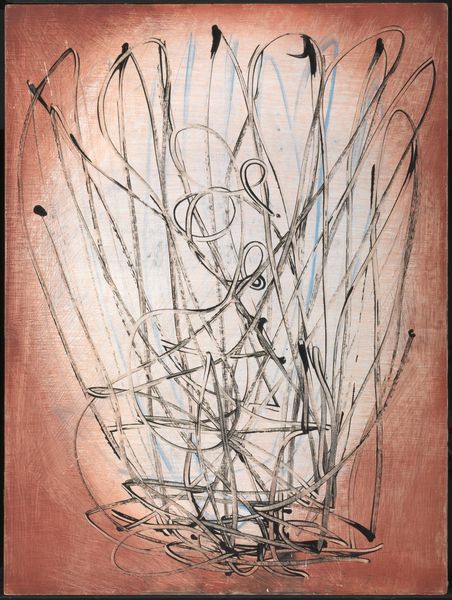
Dimensions: image: 654 x 768 mm
Copyright: © The estate of Dieter Roth | CC-BY-NC-ND 4.0 DEED, Photo: Tate
Curator: Dieter Roth's "Self-Portrait as Pile of Dog Dirt" is quite something, isn't it? The piece is held in the Tate Collections and measures 654 by 768 mm. What’s your initial take? Editor: Visually, it's a chaotic vortex, almost violently deconstructed. The layering gives a sense of unease, like a mind unraveling. Curator: Roth was always pushing boundaries. Think of the Fluxus movement, the anti-art ethos. This work embodies that rejection of conventional portraiture. The title itself, "Self-Portrait as Pile of Dog Dirt," is a provocation, a commentary on the artist's perceived worth. Editor: It definitely disrupts the notion of the artist as a revered figure. There's a strong element of self-deprecation, almost abjection, that speaks to broader anxieties about identity and artistic value. Curator: Precisely. And it makes you wonder about the role of art in society, doesn't it? Is it meant to elevate, to beautify, or to confront and disturb? Editor: It's a powerful reminder that art can be a mirror reflecting uncomfortable truths. Roth's unflinching self-examination is both repulsive and deeply compelling.
Comments
tate 6 months ago
⋮
http://www.tate.org.uk/art/artworks/roth-self-portrait-as-pile-of-dog-dirt-p01851
Join the conversation
Join millions of artists and users on Artera today and experience the ultimate creative platform.
tate 6 months ago
⋮
The variety of Roth’s self-portraits made in the 1970s is remarkable. Both of these works share a sense of spontaneous energy. At the heart of Self-Portrait as Pile of Dog Dirt, Roth pictures himself with recognisable protruding ears in the centre of a fetid vortex. Gallery label, March 2007
